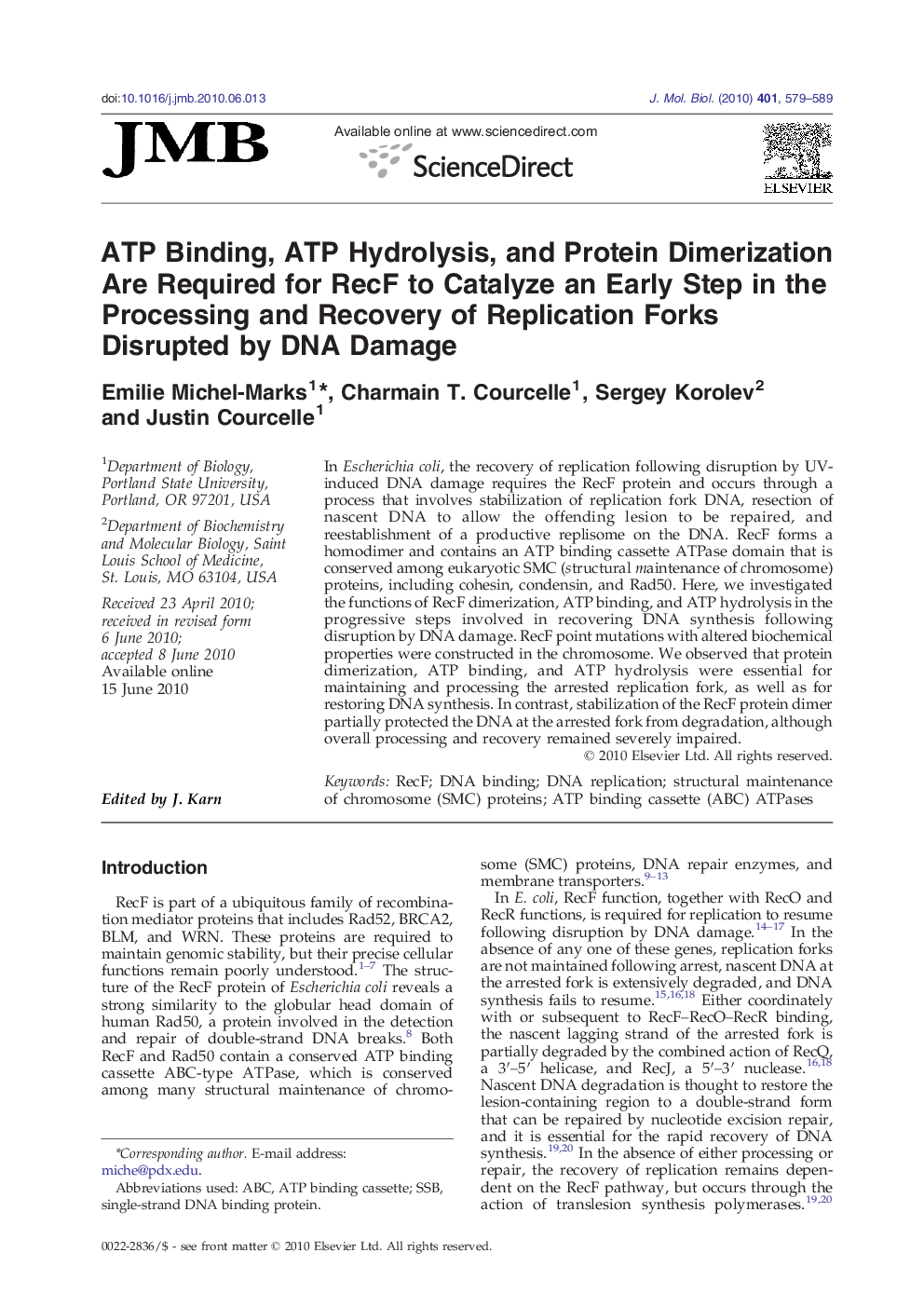| Article ID | Journal | Published Year | Pages | File Type |
|---|---|---|---|---|
| 2185628 | Journal of Molecular Biology | 2010 | 11 Pages |
In Escherichia coli, the recovery of replication following disruption by UV-induced DNA damage requires the RecF protein and occurs through a process that involves stabilization of replication fork DNA, resection of nascent DNA to allow the offending lesion to be repaired, and reestablishment of a productive replisome on the DNA. RecF forms a homodimer and contains an ATP binding cassette ATPase domain that is conserved among eukaryotic SMC (structural maintenance of chromosome) proteins, including cohesin, condensin, and Rad50. Here, we investigated the functions of RecF dimerization, ATP binding, and ATP hydrolysis in the progressive steps involved in recovering DNA synthesis following disruption by DNA damage. RecF point mutations with altered biochemical properties were constructed in the chromosome. We observed that protein dimerization, ATP binding, and ATP hydrolysis were essential for maintaining and processing the arrested replication fork, as well as for restoring DNA synthesis. In contrast, stabilization of the RecF protein dimer partially protected the DNA at the arrested fork from degradation, although overall processing and recovery remained severely impaired.
